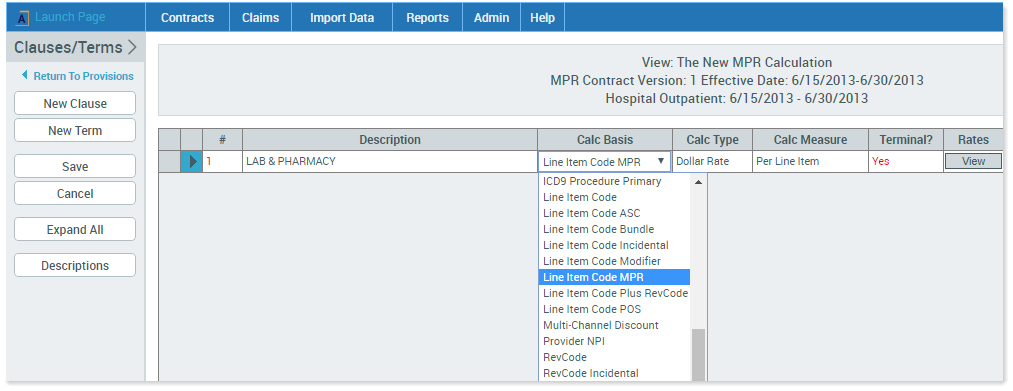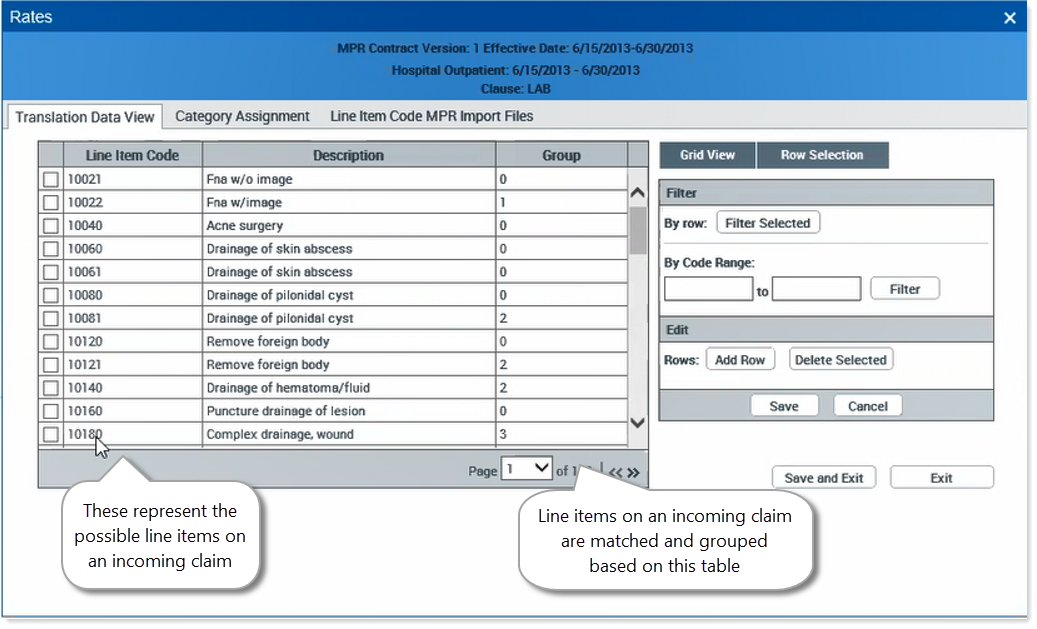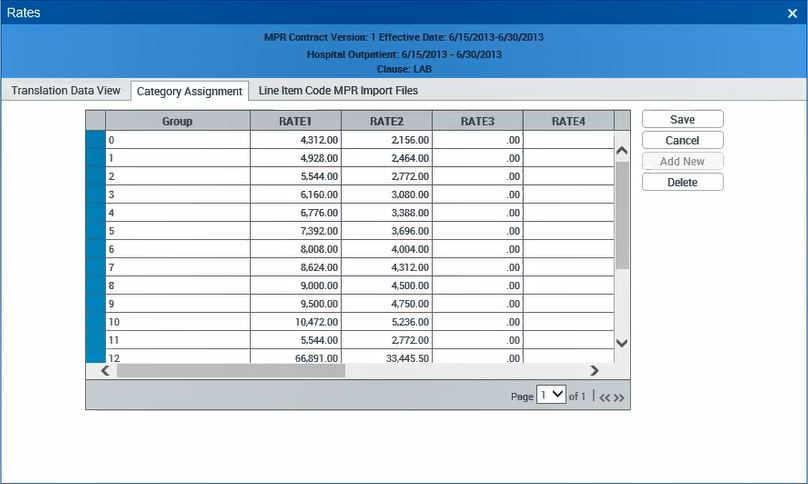About multiple-procedure payment reduction line items
When you build contracts that include multiple procedure payment reduction (MPR) line items, if those line items have four or more reimbursement rates, you can model them using MPR calculations by percentage. The Line Item Code MPR calculation handles both dollar and percentage rates, whereas the Line Item ASC handles only dollar amounts. The Line Item Code MPR calc basis calculates claims that are reimbursed based on multiple-rate tiers. This calc basis is available in the Calc Basis menu for clauses and terms, as shown in the following example:

Line Item MPR uses Translation Tables similar to Line Item ASC. Translation Tables consist of columns of line item codes and their associated Group column. (You don’t need to add descriptions to the table because they are automatically populated based on the existing Line Item Code library entries.)

The Rates form for Line Item MPR has a ten-tier procedure reduction calculation consisting of nine rate columns and one sub rate column on the Category Assignment tab to handle procedure reduction logic in contracts. You do not need to specify all ten tiers, but at minimum you must specify one rate and the Subrate column. You can enter rates manually or upload translation and rates tables. For more information, see Import rates for a clause or term.
With Line Item MPR, rates may be either percentages (loaded as decimals) or dollars.
When loading rates using an Excel file, the Subrate must be defined. The Subrate is the last payable rate. For example, if a contract says all services are reimbursed at 100/50/25/25, then program 100% of the given rate in Rate 1, 50% of the given rate in Rate 2, and 25% of the given rate in the Subrate. This causes all services found in the Translation Table to be calculated.
If reimbursement is limited to a set number of services, use the rate columns and Subrate to limit reimbursement. For example, if only three services are payable, program Rate 1 - 3 with the appropriate value and Subrate with $0. This prevents any services from calculating after the third procedure.
As with Line Item ASC, reimbursement order is determined by rate, assessing the services with the highest reimbursable amount and paying those first.

When a qualifying claim comes in and triggers on the Line Item MPR clause, the system determines the group it belongs to based on the Translation Table. After all qualifying line items are grouped, the system assigns the rates to each group based on the Day of Service and rates set for the clause/term.
For more information, see the following:
Claim voucher reports display Line Item Code MPR calc details
When reconciling an MPR calculation on a claim, you can use the voucher report to see which line items on the claim triggered Line Item Code MPR on a contract and were paid based on that calculation logic. You can use this detail to track down under or over payments and to justify proper payment from the payer.
In the following example, a claim voucher report displays the following details for a Line Item MPR calculation on a claim:
- The service codes on the claim that matched those on the Line Item MPR clause
- The service date detail, line item code with description, and the group, units, and qualified level
- Payment amount for each
